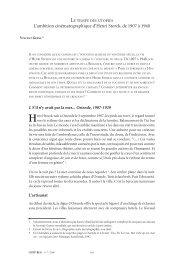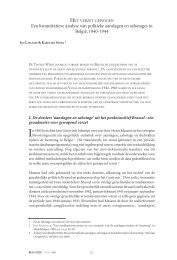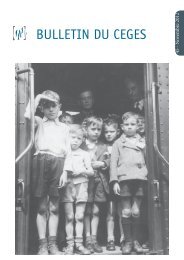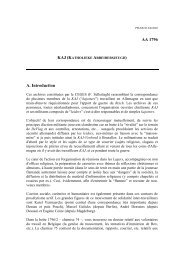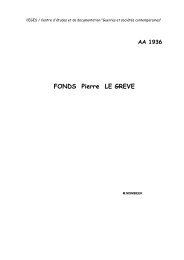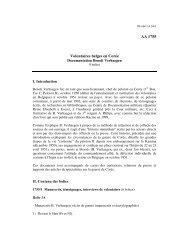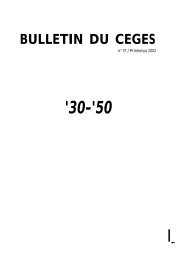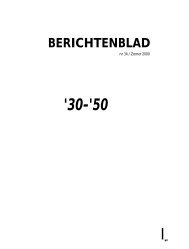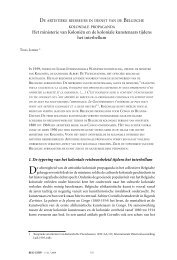Artsen Zonder Grenzen-België, genese van een atypische NGO ...
Artsen Zonder Grenzen-België, genese van een atypische NGO ...
Artsen Zonder Grenzen-België, genese van een atypische NGO ...
Create successful ePaper yourself
Turn your PDF publications into a flip-book with our unique Google optimized e-Paper software.
Samenvattingen / Résumés / Summariesthe masses, who were often illiterate, were convinced of the merits of the colonialproject.The motor in the development of artistic colonial policy was not, however, theMinistry of the Colonies, but the Africanophile cultural-artistic milieu which heldexpeditions and issued statements in favour of the institutionalisation of a systemof travel scholarships. In this way, the ministry became increasingly convinced ofthe strength of artistic propaganda. The appeal of African art lay in the exotic natureof its palette of colours, and on the possibility of using canvases and monumentalimages to convince the common people of the splendour of the colonies. It was at th<strong>een</strong>d of the 1920s that this artistic-colonial milieu achieved its goal. It was at that timethat the Ministry of the Colonies awarded an official artistic travel scholarship to thepainters Fernand Allard l’Olivier and Henri Kerels in the context of the grants awardedin preparation of the colonial pavilion at the Universal Exhibition held in Antwerpin 1930. The considerable public success of Allard l’Olivier, the emergence of a newluxury tourism and the closer collaboration betw<strong>een</strong> the Ministry of the Coloniesand the Association of Belgian Colonial Writers and Artists were all factors whichencouraged the Ministry of the Colonies to expand its programme of travel grantsduring the 1930s. Nevertheless, the allocation of these grants was often distinguishedby a lack of consistency and indecision. The prolonged economic crisis and a certainofficial reluctance to develop a defined policy lay at the origins of this problem, asdid the informal procedures, the absence of a fixed budget and the preferences of thecolonial officials concerned. Nevertheless, despite these difficulties, the colonial travelscholarship became an important and essential element of the institutionalisation of apolicy of artistic propaganda.From the 1930s onwards, the colonial authorities developed the practice of subsidisingtwo such missions per year. In this way, roughly ten Belgian artists, including AndréHallet, Clément Serneels and Jane Tercafs, received travel scholarships for overseasjourneys. The scholarship was closely associated with colonial propaganda because,in exchange for the travel grant, the authorities made the artists carry out certainmissions and acquired certain of the works of art produced. The themes encouragedby the officials were generally historical-style presentations of the impact of theBelgian presence on the Congo, portraits and exotic ethnographic scenes, as wellas the glorification of colonial figures and of memorable historical events. Analysisof the policy followed in the allocation of the colonial travel scholarships duringthe inter-war period demonstrates incontestably that the Ministry of the Colonieschose to invest in this cultural field principally for utilitarian reasons and not outof artistic motives. In this way, the colonial authorities made use of this exotic art asone element of modern visual popular propaganda in favour of Congo and Rwanda-Urundi.319



